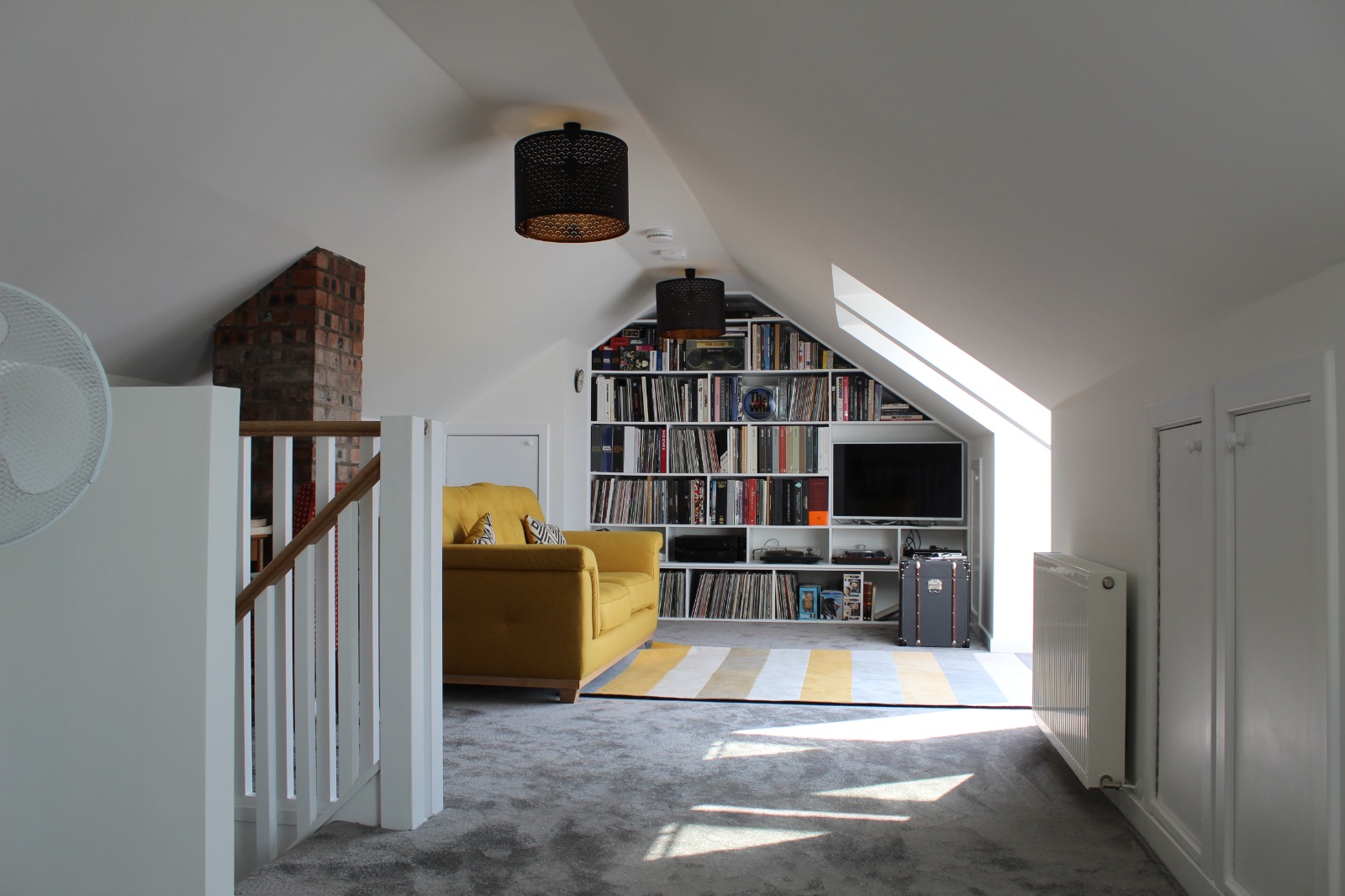Loft Conversions in Edinburgh: A Comprehensive Guide
Welcome to our comprehensive guide to loft conversions in Edinburgh! If you’re considering transforming your home with an expertly designed loft conversion, then you’re in the right place.
We have years of experience creating beautiful and functional loft spaces for homeowners across Edinburgh.
Whether you’re looking to add more space to your home, create a new bedroom or living area, or increase the value of your property, a loft conversion can be an excellent investment. With our expert designs and transformations, you can turn your unused space into a beautiful and functional area that you and your family will love.
Key Takeaways
- Loft conversions in Edinburgh offer a range of benefits, including added space (so you don’t have to move house), increased property value, and improved functionality.
- There are several types of loft conversions available, including dormer, Velux, Hip-to-Gable, Mansard Conversion, and Truss-to-Rafters Conversion, each with its unique advantages.
- Building regulations and planning permission requirements must be considered when planning a loft conversion in Edinburgh.
- It’s essential to hire an experienced team of loft conversion specialists to ensure your project is completed to the highest standards.
- Whether you’re considering a Velux or Dormer conversion or another type of loft conversion, it’s crucial to choose the right design for your Edinburgh home.
Why Consider a Loft Conversion in Edinburgh?
Are you looking for a way to add value to your Edinburgh home while maximizing space? Look no further than a loft conversion. Not only does it provide a new bedroom or living area, but a loft conversion can also add thousands to the value of your property.
One of the main benefits of a loft conversion is the ability to create a new space without the hassle and expense of moving. It’s a cost-effective way to add value to your home while also improving your quality of life.
Another advantage of a loft conversion is the potential to maximize natural light. With a well-designed conversion, you can let in more sunlight and create a brighter, more welcoming atmosphere. This is especially true for Velux conversions, which utilise roof windows to provide abundant natural light and ventilation.
Whether you’re looking to add a bedroom, living room, or home office, a loft conversion in Edinburgh can be a smart investment that can pay off in the long run.
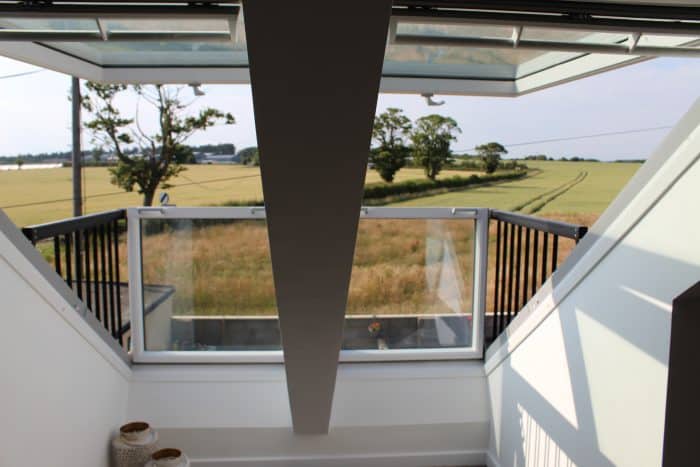
Get in touch with us
Types of Loft Conversions
If you’re considering a loft conversion in Edinburgh, one of the first decisions you’ll need to make is which type of conversion will suit your property and your needs best. Here are the main types of loft conversion available:
- Dormer Conversion: A dormer is an extension that projects vertically from the slope of the roof, creating additional headroom and floor space. Dormer conversions can vary in size and shape, such as flat roof, shed dormer, hipped roof, or gabled dormer.
- Hip-to-Gable Conversion: This type involves extending the sloping “hip” roof to create a vertical gable wall. This increases both floor space and headroom within the loft area.
- Mansard Conversion: A mansard conversion features a flat roof with sloping sides that are almost vertical. This style often requires significant alterations to the existing roof structure, offering a substantial amount of additional living space.
- Velux or Roof Light Conversion: Also known as a skylight conversion, this is a simpler and more cost-effective option. It involves adding windows (often called roof lights or Velux windows) to the existing roof slope to bring in natural light and ventilation. Along with a Dormer conversion, this is the most popular type of Loft Conversion
- Truss-to-Rafters Conversion: Most newer homes have roof trusses, which are structural frameworks that can limit usable space. Converting from trusses to traditional rafters can provide more space, but it’s a more complex and expensive process.
- Cottage or Bungalow Loft Conversion: This type is designed for single-story homes, such as cottages or bungalows. It often involves adding a dormer or extending the roof to create additional space.
- L-Shaped Conversion: In situations where there are two separate roof spaces, an L-shaped conversion combines these spaces to create a larger, interconnected living area.
- Edinburgh Tenement loft conversions: The space above your top floor flat can be converted into habitable space, you can read all about Tenement loft conversions here
Each type of conversion has its own advantages and disadvantages, and the best option for your property will depend on a number of factors, including the size and shape of your property, your budget, and your personal preferences.
Planning Permission for Loft Conversions in Edinburgh
Planning permission is a crucial aspect of any building project, including loft conversions in Edinburgh. In most cases, you will need planning permission before starting any work on your loft conversion project. However, there are certain exemptions and regulations that may apply, depending on the type and size of your conversion.
It’s important to note that planning permission is different from building regulations, which are mandatory standards that must be met for any construction work. Building regulations apply to all loft conversions in Edinburgh, regardless of whether planning permission is required or not.
| Do you need planning permission? | Exemptions and regulations |
|---|---|
| Permitted development | If you opt for a Velux or Rooflight conversion, you may not need planning permission. This is known as permitted development and allows for minor alterations to be made to your property without planning permission, as long as certain conditions are met. |
| Full planning permission | If your loft conversion does not meet the requirements for permitted development, you will need to apply for full planning permission. This involves submitting detailed plans and drawings to your local planning authority for approval. |
| Listed buildings and conservation areas | If your property is a listed building or located in a conservation area, additional planning restrictions may apply. We can advise you on this. |
John Webster Architecture can offer professional advice to ensure that your loft conversion adheres to all necessary planning regulations and requirements.
When Planning Permission is Not Required for a Loft Conversion in Edinburgh
It is important to note that not all loft conversions in Edinburgh require planning permission. Homeowners can take advantage of permitted development rights and exemptions to carry out certain types of loft conversions without seeking planning permission from the council. Although we always advise our clients to apply for a certificate of lawfulness
Permitted development rights allow homeowners to make certain changes to their property without seeking planning permission. In the case of loft conversions, these rights apply to changes that do not exceed a certain volume or size and do not impact the aesthetic appearance of the property’s exterior.
CEC produces a guide relating to permitted development, you can read this here
Exemptions from planning permission may also apply in certain cases. For example, if the loft conversion only involves adding a rooflight to the roof plane, planning permission may not be required. However, it is important to ensure that the conversion falls within the specific criteria set out by the council to qualify for exemption.
The photo below and above shows a recently completed Attic conversion in Craiglockhart, this included Velux Cabrio Balcony Rooflights which are considered Permitted development by CEC planning department.
This added a master suite on the first floor (previously a bungalow with a garage on the lower ground floor), the balcony windows never disappoint and are well worth considering for your project.
John Webster Architecture can advise whether planning permission is required for your loft conversion project in Edinburgh.
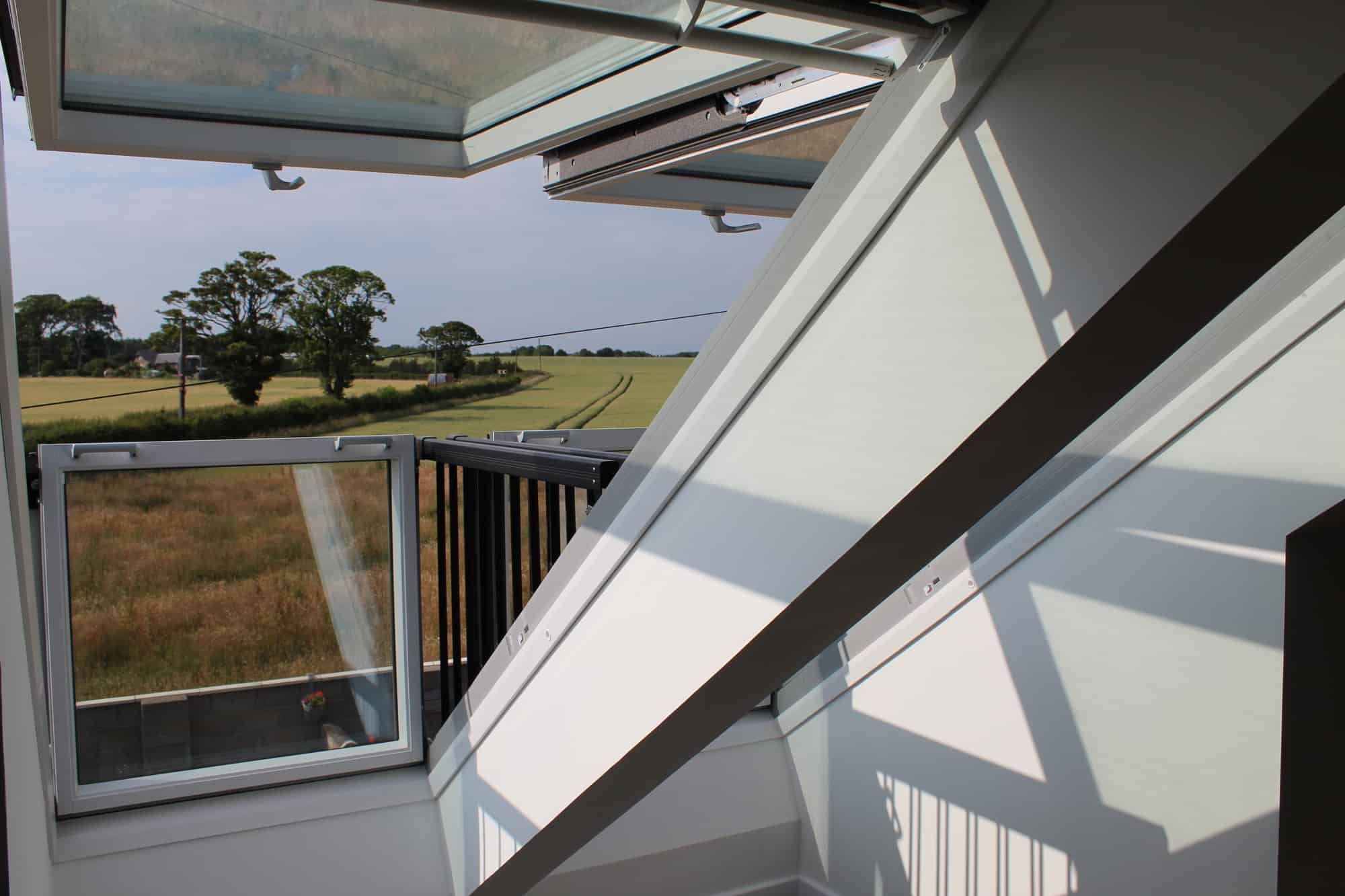
Get in touch with us
Loft Conversion Costs in Edinburgh
While the cost of a loft conversion in Edinburgh can vary depending on the size and type of conversion, the average cost typically ranges from £60,000 to £150,000. Factors that can influence the cost include the complexity of the design, materials used, and labour costs.
For example, a Velux conversion, which involves the installation of roof windows, is generally less expensive than a dormer conversion, which requires more structural work. Similarly, a basic attic conversion with minimal design features may cost less than a more complex conversion with multiple rooms or unique features.
It’s important to remember that while a loft conversion may seem like a significant investment upfront, it has the potential to add significant value to your home in the long run. Not only can it provide additional living space, but it can also increase the overall market value of your property.
Maximizing the Value of Your Home with a Loft Conversion
One of the biggest advantages of a loft conversion in Edinburgh is the potential to add value to your property. With the current housing market, many homeowners are looking for ways to increase the value of their homes, and a loft conversion is a smart investment.
Adding an extra bedroom or living space can significantly increase the property value, and a well-designed loft conversion can also enhance the aesthetics and functionality of your home. An Attic conversion also offers potential buyers a unique feature that sets your property apart from others in the area, making it more attractive to potential buyers.
Investing in a loft conversion can reap long-term benefits, even beyond the monetary value. With a new space, you can improve your overall quality of life, and enjoy the added convenience and comfort the extra space provides.
Choosing the Right Loft Design for Your Edinburgh Home
When it comes to loft conversions in Edinburgh, choosing the right design is crucial to ensure you get the most out of your space. Here are some tips to help you make the right choice:
- Consider functionality: Think about how you will use the space and what features you need to make it work for you. For example, if you’re creating a new bedroom, you’ll need to ensure there’s enough headroom, natural light, and storage space. Building regulations state that a stair must have a minimum of 2.0m headheight on landings and all the way up the stairs.
- Maximize natural light: Using windows and skylights can add natural light to your space, making it feel bigger and brighter.
- Think about aesthetics: Your loft conversion should complement the style of your home and reflect your personal tastes. This can be achieved through features such as flooring, lighting, and decor.
- Consider the layout: The layout of your loft conversion can impact the flow and functionality of your space, so think carefully about the placement of furniture and features.
- Work with a specialist: Loft conversion specialists in Edinburgh can provide expert advice on design options that will work best for your home and needs.
By taking these factors into account when choosing your loft conversion design, you can create a space that is functional, aesthetically pleasing, and tailored to your needs.
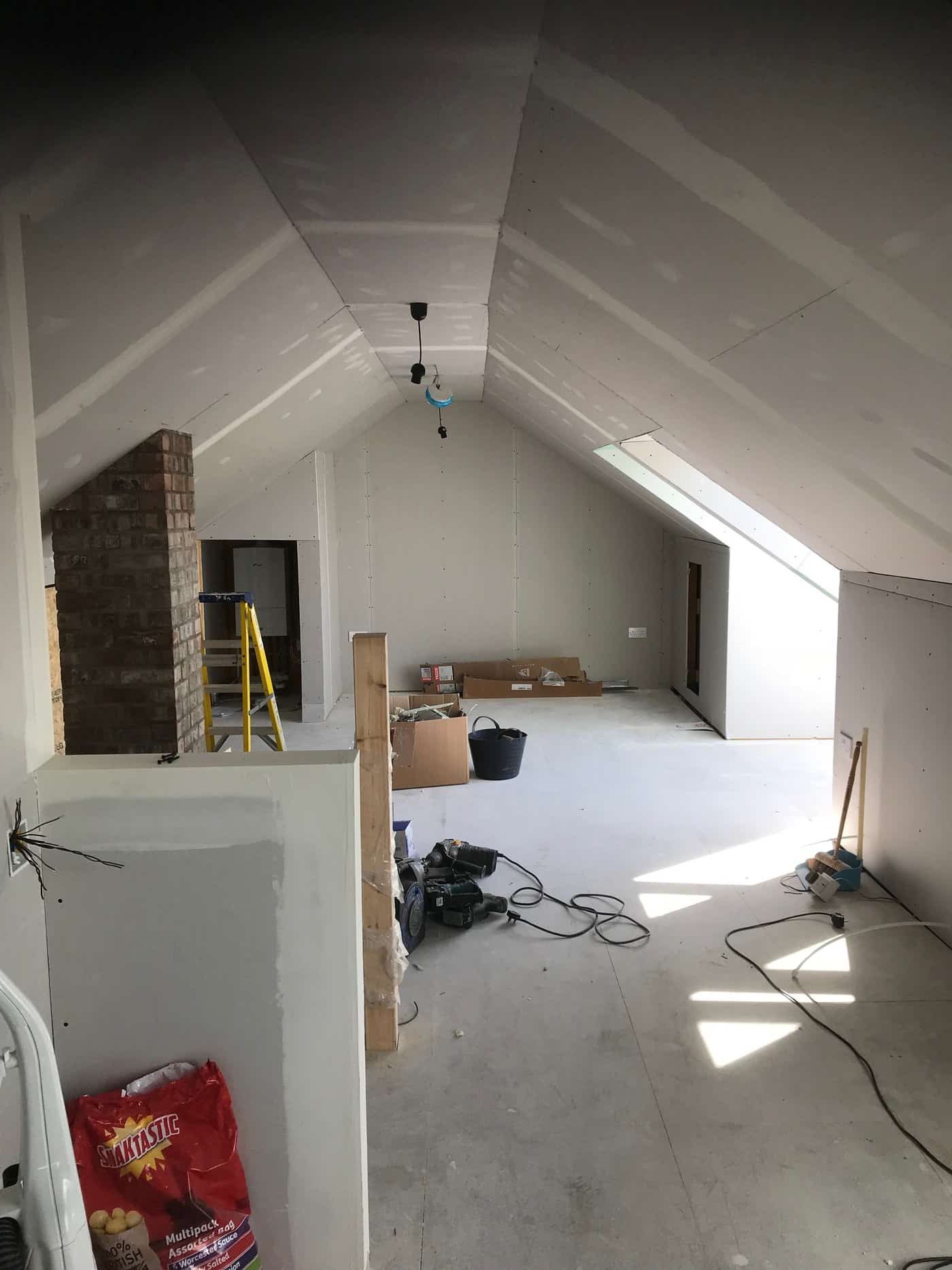
Get in touch with us
Hiring Loft Conversion Specialists in Edinburgh
When it comes to transforming your Edinburgh home with a loft conversion, you want to make sure you’re hiring the best professionals for the job. While it may be tempting to try a DIY approach, loft conversions require a high level of expertise and skill to ensure they are completed safely and to a high standard.
Choosing the right building contractor can be a daunting task, but it’s essential to take the time to research and find a team you feel confident in. Consider the following tips when searching for your ideal loft conversion experts:
| Tip | Description |
|---|---|
| Check for experience | Look for loft conversion specialists in Edinburgh with a strong track record of completing successful projects. Experience is key when it comes to handling the unique challenges of loft conversions, such as uneven roof structures and limited space. |
| Read customer reviews | Take the time to read reviews from previous customers to get a sense of the quality of work and customer service provided by potential loft conversion specialists. Check for reviews on their website, social media pages, and other online platforms. |
| Ask for references | Request references from previous clients and follow up with them to ask about their experience with the loft conversion company. This can give you a better sense of the team’s professionalism, communication, and attention to detail. |
| Check for insurance and certifications | Make sure the loft conversion specialists you choose are fully insured and certified. This protects you, your property, and the workers involved in the project in case of any accidents or damages. |
| Get a detailed quote | Ask for a detailed quote from potential loft conversion specialists that includes all aspects of the project, such as design, materials, labour, and any additional costs. This can help you compare prices and choose a team that fits within your budget. |
By taking the time to find the right loft conversion specialists in Edinburgh, you can ensure your project is completed to the highest standards, within your budget and timeframe, and with minimal stress or disruption to your daily life. Invest in the right team and transform your home with confidence.
Your Loft Conversion Project: Here is our EXACT process from start to finish
We have detailed our exact process below for a successful loft conversion, we will hold your hand and guide you through with this tried and tested process.
Step 1: Initial Enquiry 📞 Begin your loft conversion journey by reaching out to us with your ideas and questions. We’re excited to hear about your vision!
Step 2: Personalized Consultation 🗓️ We’ll schedule a 20-minute call to delve into the details of your project. Before our chat, we’ll ask you for floor plans, photos, and other relevant materials to get a clear understanding.
Step 3: Professional Assessment and Quote 💰 Based on our discussion, we’ll provide you with a comprehensive fee quote. This covers everything from architectural design to planning and building warrant submissions.
Step 4: On-Site Survey 🏠 Once you’re onboard, we’ll arrange a convenient time to visit your property for an in-depth survey. This helps us get a firsthand look at the space and its potential.
Step 5: Custom Design Tailored to You ✏️ Our design work kicks off, and within just 4 weeks of the site visit, we’ll present you with initial draft design drawings. Your feedback is invaluable as we refine the design to match your vision and preferences.
Step 6: Regulatory Compliance with Confidence 📜 With your final layout approval, we’ll prepare detailed drawings to meet the requirements of planning applications or certificates of lawfulness if planning isn’t necessary.
Step 7: Building Warrant Ready 🏗️ We’re in the home stretch! Once planning is approved, we’ll prepare drawings up to building warrant standards. Plus, we’ll secure a competitive fee quote from a structural engineer for their expertise.
Step 8: Smooth Building Warrant Process 🏢 Sit back as we take charge of submitting your building warrant application and liaising with the building standards department on your behalf until approval is secured.
Step 9: Equipped for Construction Success 📊 Congratulations on getting the green light! We’ll provide you with all the approved drawings and documentation, along with a detailed email that outlines what’s needed during the construction phase.
Step 10: Your Support Throughout Construction 🛠️ If desired, we’re here to help you every step of the way. From assisting in selecting the right contractor to managing communications with the local authority during construction.
Step 11: The Finishing Touch: Completion 🏁 As the project wraps up, we can even guide you through applying for the completion certificate. Your loft conversion dream has now become a reality!
🔗 Get Started Today! 📧 Ready to transform your loft space? Reach out to us to begin your loft conversion adventure. Your dream home is just a few steps away, and we’re here to guide you through it all.
Building Regulations for Loft Conversions in Edinburgh
When planning a loft conversion in Edinburgh, it’s important to consider the building regulations that apply to the project. These regulations help to ensure that the conversion is safe, structurally sound, and energy efficient. The regulations cover various aspects of the conversion, including:
| Aspect | Requirements |
|---|---|
| Structural stability | The structure of the loft must be strong enough to support the new use and any additional weight, such as furniture. |
| Fire safety | The loft conversion must comply with fire safety regulations, including the provision of smoke alarms and escape routes. |
| Insulation | The loft must be adequately insulated, both to comply with regulations and to ensure energy efficiency. |
The regulations also cover other areas, such as electrical safety and ventilation.
Building standards produce a technical handbook containing all the areas where compliance is required
It’s important to note that building regulations are separate from planning permission, although both may be required for your loft conversion. Even if planning permission is not necessary, you will still need to comply with building regulations. Failure to do so can result in delays, additional costs, and even legal action. It’s therefore essential to work with a reputable loft conversion specialist who has experience in complying with building regulations.
Remember: meeting building regulations will help ensure your loft conversion in Edinburgh is safe, energy-efficient, and legally compliant.
The Scottish Building Standards Domestic Technical Handbook provides guidance on various aspects of construction for domestic buildings in Scotland. A loft conversion must comply with several sections of this handbook to ensure safety, functionality, and adherence to regulatory standards. Here are the relevant sections and reasons for compliance:
- Section 0: Introduction and Status of Guidance: This section provides an overview of the technical guidance and sets the context for compliance with building standards. Complying with this section ensures that the loft conversion adheres to the general principles and objectives of the building standards.
- Section 1: Structure: This section covers the structural design and integrity of the building. A loft conversion needs to comply with this section to ensure that the additional load from the conversion is properly supported by the existing structure without compromising its stability.
- Section 2: Fire: Compliance with this section ensures that fire safety measures are in place to prevent the spread of fire within the building. A loft conversion must meet fire-resistant requirements, including fire-resistant doors, escape routes, and fire-resistant materials, to enhance occupant safety.
- Section 3: Environment: This section covers environmental factors such as moisture control and energy efficiency. Compliance is essential to prevent issues like condensation, dampness, and energy wastage in the newly converted loft space.
- Section 4: Safety (from falling, collision, and impact): A loft conversion must adhere to safety regulations to prevent accidents caused by falling, collision, or impact. This involves proper design of guardrails, handrails, balustrades, and other protective measures.
- Section 5: Noise: Compliance with noise regulations ensures that the loft conversion provides adequate acoustic insulation to minimize sound transmission between spaces, enhancing occupant comfort.
- Section 6: Energy: This section focuses on energy efficiency standards. A loft conversion needs to meet these standards to contribute to overall energy efficiency goals and reduce carbon emissions.
- Section 7: Sustainability: Compliance with sustainability principles contributes to reducing the environmental impact of the building. A loft conversion should consider sustainable materials, construction methods, and waste management.
Complying with these sections of the Scottish Building Standards Domestic Technical Handbook ensures that a loft conversion is safe, functional, energy-efficient, and environmentally responsible. It helps create a comfortable and secure living space while adhering to the legal and regulatory requirements of building construction in Scotland
Get in touch with us
Loft Conversion – Structural changes
Don’t be fooled into thinking that all you need to do is add insulation, plasterboard, a stair and flooring.
A structural engineer is almost always required for a loft conversion due to the technical complexities involved in modifying a building’s structure and ensuring safety and compliance. Here are five key points highlighting why their expertise is essential:
- Structural Assessment: A loft conversion involves adding new elements to the existing structure, such as floor joists, beams, and potentially modifying load-bearing walls. A structural engineer assesses the structural integrity of the building, ensuring that it can safely support the added weight and changes without compromising its stability.
- Load Distribution: A structural engineer calculates how the additional loads from the loft conversion will be distributed throughout the existing structure. This includes determining the appropriate sizing and placement of structural elements to prevent overloading and ensure even load distribution.
- Design Complexity: Loft conversions often require customized structural solutions to accommodate various factors, such as the shape of the roof, existing structural elements, and desired layout. A structural engineer designs these custom solutions to ensure that the new space is functional, safe, and compliant with building regulations.
- Compliance with Building Regulations: Loft conversions must adhere to local building codes and regulations to ensure safety and quality. A structural engineer’s involvement ensures that the conversion design meets these requirements, including fire safety, structural stability, and occupant egress.
- Safety and Liability: Structural safety is paramount, and a loft conversion’s failure could result in serious safety hazards or costly repairs. A structural engineer’s expertise helps prevent potential structural issues, mitigating risks and liabilities for both homeowners and contractors.
In summary, a loft conversion involves altering the existing building structure and adding new loads that demand careful consideration and expertise. A structural engineer’s involvement ensures that the conversion is not only aesthetically pleasing but also structurally sound, safe, and compliant with building regulations. Their input contributes to the successful execution of the project while safeguarding the well-being of occupants and the integrity of the building.
We can lead the design team and obtain your planning and building warrant approvals
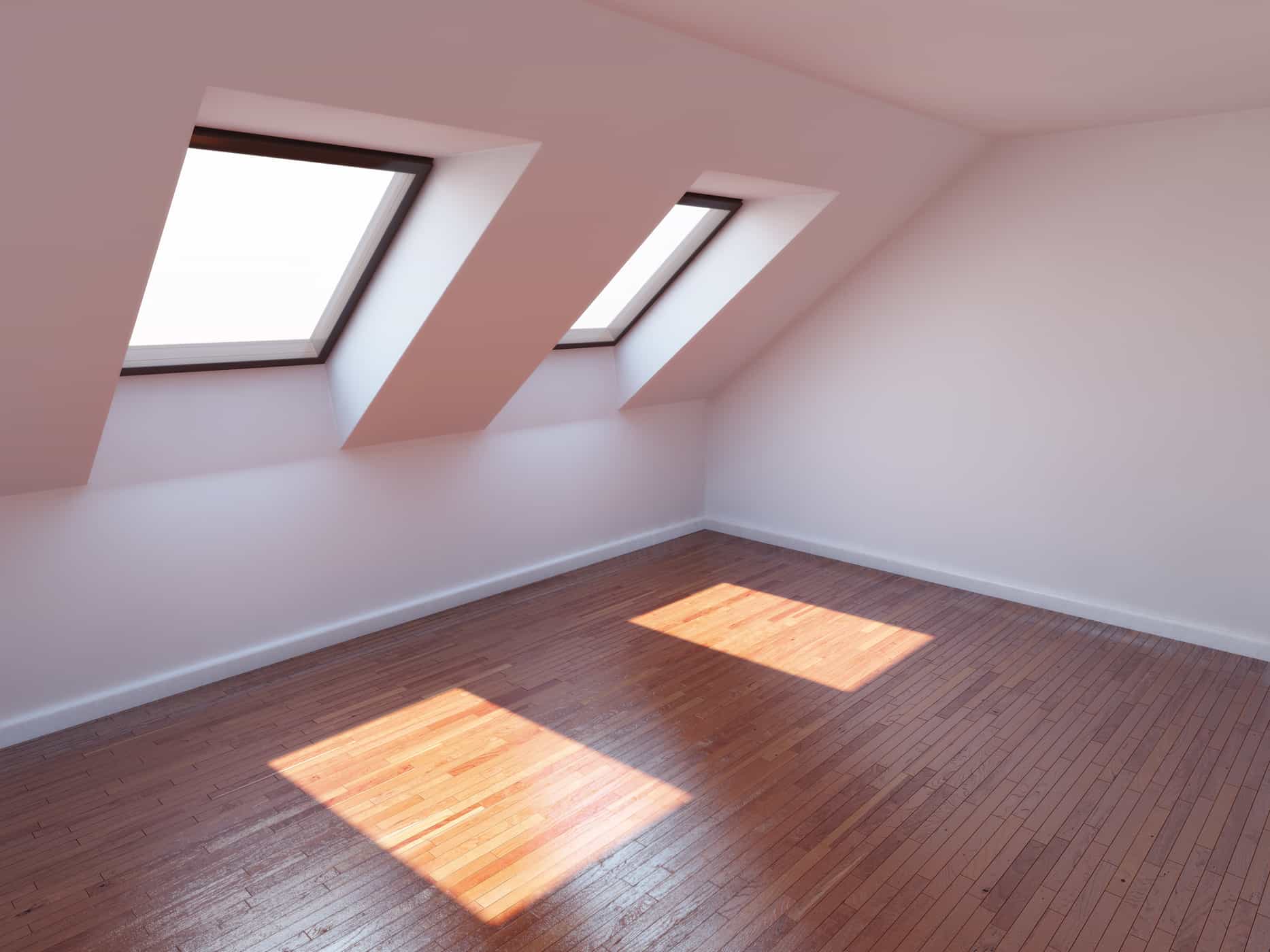
Considerations for Velux Loft Conversions in Edinburgh
A Velux loft conversion is by far and away the most popular choice for many homeowners in Edinburgh looking to add extra space and natural light to their homes. However, there are certain considerations to keep in mind when planning a Velux conversion.
Maximising Natural Light
The main benefit of a Velux conversion is the amount of natural light it can bring into your home. When planning your conversion, it’s important to consider the positioning of the windows to maximise the amount of light that enters the room. This can make the space feel bigger and more open.
Ensuring Adequate Ventilation
Another important consideration for Velux loft conversions is ensuring adequate ventilation. This can be achieved through the use of both windows and air vents. The right ventilation will help keep the room cool in summer and reduce the risk of condensation and dampness.
Ensuring Energy Efficiency
Energy efficiency is also an important consideration for Velux loft conversions. Choosing the right type of window and ensuring proper insulation can help to keep the room warm in winter and reduce energy bills.
Overall, a Velux loft conversion can be a great way to add extra space and value to your Edinburgh home. By keeping these considerations in mind, you can ensure that your conversion is a success.
Transforming Your Roof Space: Attic Conversions in Edinburgh
If you’re looking to maximise the space in your home, an attic conversion could be the perfect solution. In Edinburgh, where properties are often lacking in living space, an attic conversion can create a new bedroom, home office or living area, without the need for an extension. With the right design and planning, you can make the most of your roof space and add value to your home.
| Benefits of Attic Conversions |
|---|
| 1. Additional Living Space: Converting your attic can create an extra room for your household to enjoy. |
| 2. Investment: An attic conversion can increase the value of your property and provide a solid return on investment. |
| 3. Cost-Effective: Compared to other renovation projects, an attic conversion is often a more cost-effective option. |
Attic conversions can be more challenging than other types of loft conversions, as they often require more significant alterations to the roof structure. However, with the right loft conversion specialists in Edinburgh, you can ensure that your attic conversion is completed to a high standard and meets all the necessary building regulations.
Design Considerations for Attic Conversions in Edinburgh
When planning your attic conversion, it’s essential to consider the space available, the layout, and the practicalities of how the room will be used. This is where working with an experienced loft conversion designer can be invaluable. They can offer advice on what is possible and help you to create a design that meets your specific requirements. Some important factors to consider include:
- The natural lighting available in the space
- The height and pitch of the roof
- The ease of access to the attic
- The insulation and ventilation requirements of the space
With the right design, an attic conversion can provide a comfortable and functional living space that makes the most of the unique features of your property.
Get in touch with us
Determining If Your Loft is Suitable for Conversion in Edinburgh
Before embarking on a loft conversion project in Edinburgh, it’s crucial to determine whether your loft is suitable for conversion. Factors such as height, pitch, and access can impact the feasibility and cost of the project.
To assess the potential of your loft, consider the following:
| Factor | Considerations |
|---|---|
| Height | The height from the floor to the underside of the ridge beam should ideally be a minimum of 2.2 metres for a usable living space. |
| Pitch | The pitch of the roof should ideally be at least 30 degrees to allow for adequate headroom and natural light. |
| Access | The loft will require a compliant staircase |
| Structure | The roof structure should be strong enough to support the additional weight of the conversion, including any new walls, floors, and furniture. |
Making the Right Choice for Your Loft Conversion in Edinburgh
Considering a loft conversion in Edinburgh can be a significant investment for your home, it’s essential to make the right choices at every stage of the process. Here are some key factors to keep in mind as you plan your loft conversion project:
| Design | Cost | Planning Permission | Specialists |
|---|---|---|---|
| Choose a loft design that maximizes space, functionality, and aesthetics, based on your needs and preferences. | Consider the factors that can influence the cost of your loft conversion, such as the type and size of the conversion and any additional features you may want to include. | Be aware of the planning permission requirements for loft conversions in Edinburgh, and ensure you adhere to all necessary regulations. | Research and hire professional loft conversion specialists in Edinburgh who have the skills, expertise, and experience to deliver high-quality results. |
By keeping these factors in mind, you can make informed decisions about your loft conversion project from start to finish. With the right design, cost considerations, adherence to planning permission regulations, and a team of trusted specialists, your Edinburgh loft conversion can transform your home and add significant value to your property.
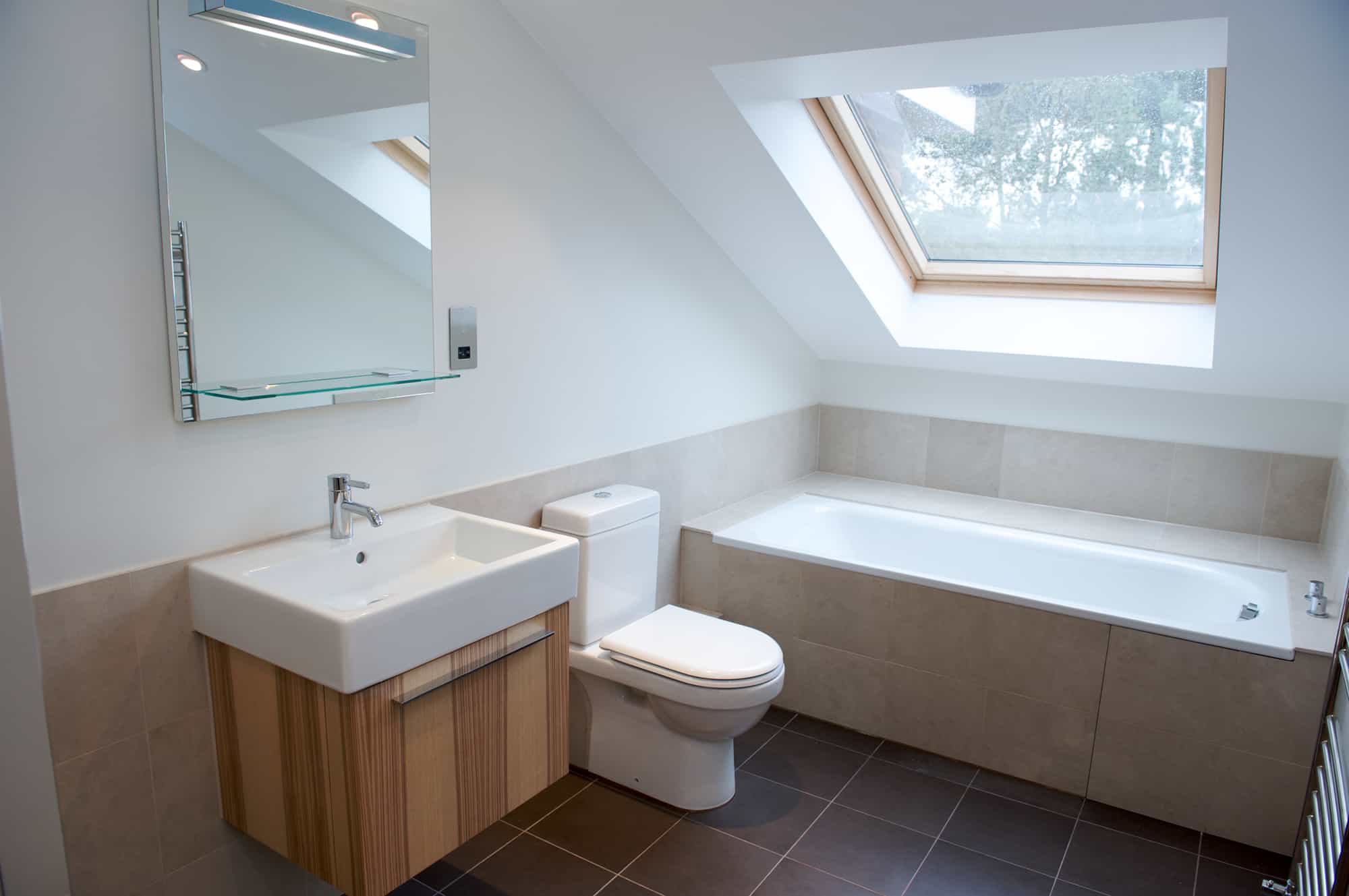
Conclusion
Loft conversions in Edinburgh offer a fantastic opportunity to transform your home, adding value, space and design possibilities. By considering the benefits, types of conversions, planning permission requirements, costs, and hiring the right specialists, you can create a functional and beautiful new living area.
With the wide variety of designs and options available, you can create a unique space that perfectly matches your needs, whether you are looking for a new bedroom, home office or living area.
By working with professional loft conversion specialists, and understanding the building regulations and suitability of your loft space, you can feel confident in transforming your home with a loft conversion in Edinburgh.
So, why wait? Take the first step today towards transforming your home and unlocking the full potential of your loft space.
FAQ
Q: Why should I consider a loft conversion in Edinburgh?
A: A loft conversion in Edinburgh can add value to your home, maximize space, and create a new bedroom or living area.
Q: What are the types of loft conversions available in Edinburgh?
A: There are various types of loft conversions available in Edinburgh, including dormer conversions, Velux conversions, and attic conversions.
Q: Do I need planning permission for a loft conversion in Edinburgh?
A: Planning permission requirements for loft conversions in Edinburgh may vary. It is important to have an understanding of the regulations and exemptions that may apply.
Q: How much does a loft conversion in Edinburgh cost?
A: The cost of a loft conversion in Edinburgh can vary depending on factors such as the type and size of the conversion. It is recommended to get a quote from a professional.
Q: Can a loft conversion increase the value of my home in Edinburgh?
A: Yes, a loft conversion can increase the value of your home in Edinburgh both in terms of monetary value and the potential for a higher sales price.
Q: How do I choose the right loft design for my Edinburgh home?
A: When selecting a loft design for your Edinburgh home, consider factors such as layout, functionality, and aesthetics. It is recommended to seek professional advice.
Q: Why is it important to hire loft conversion specialists in Edinburgh?
A: Hiring professional loft conversion specialists in Edinburgh ensures that the project is done correctly and to a high standard. It is important to find the right team for your project.
Q: What are the building regulations for loft conversions in Edinburgh?
A: Loft conversions in Edinburgh must comply with certain building regulations, including structural requirements, insulation standards, and fire safety measures.
Q: What should I consider for a Velux loft conversion in Edinburgh?
A: Velux loft conversions in Edinburgh offer benefits such as natural light, ventilation, and energy efficiency. It is important to consider these factors when planning your conversion.
Q: How can I transform my roof space with an attic conversion in Edinburgh?
A: Attic conversions in Edinburgh can transform unused roof space into functional living areas. Explore the potential of your roof space and consult with professionals for guidance.
Q: How do I determine if my loft is suitable for conversion in Edinburgh?
A: To determine if your loft is suitable for conversion in Edinburgh, consider factors such as height, pitch, and access. It is recommended to consult with professionals for an assessment.
Q: Are there situations where planning permission is not required for a loft conversion in Edinburgh?
A: Yes, there are situations where planning permission may not be required for a loft conversion in Edinburgh, based on permitted development rights and exemptions. It is important to be aware of these regulations.
Q: What factors should I consider when making decisions about my loft conversion in Edinburgh?
A: When making decisions about your loft conversion in Edinburgh, consider factors such as design, cost, planning permission, and hiring the right specialists for the project.
Q: How can a loft conversion in Edinburgh transform my home?
A: A loft conversion in Edinburgh can transform your home by adding value, maximizing space, and offering a range of design possibilities. Consider the benefits and take action to transform your home.

